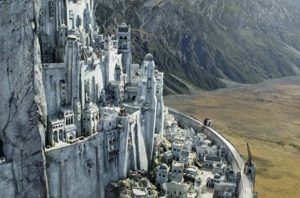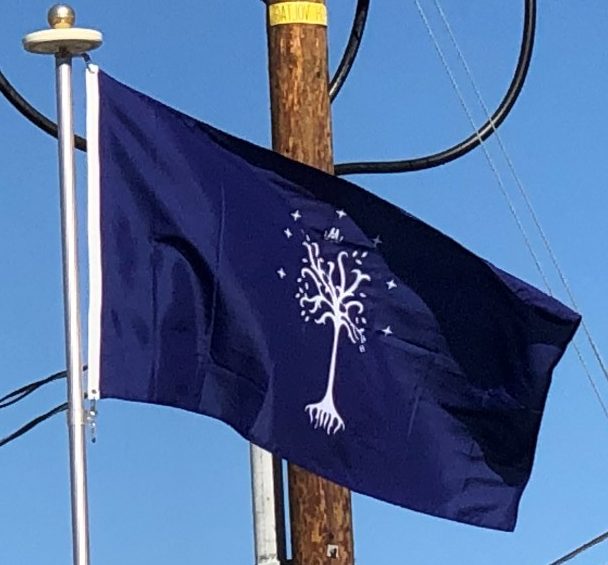
The Decline of Gondor:
However, after decadence spread under the Kings of Gondor and a long period of decline began (although Gondor experienced several revivals). Three great calamities struck Gondor during the second millennium of the Third Age, which are held to be the chief reasons for its decline: the Kin-strife, the Great Plague, and the invasion of the Wainriders (a tribe of Easterlings).
The Kin-strife:
In the 15th century TA a great civil war named the Kin-strife tore the nation apart. The current King Eldacar was of mixed blood: his mother was of the Northmen. Popular displeasure at this led to the overthrow of King Eldacar by Castamir, the admiral of all of Gondor’s naval forces who possessed some royal blood. Eldacar’s son was slain, and he fled north. Castamir was afterwards known as Castamir the Usurper. During his ten-year rule, he proved to be very cruel, and because of his love of his old fleet, he lavished attention on the coastal regions while the interior provinces were ignored and left to rot. Eldacar then returned with an army of his Northman kinsmen, and the armies of the Men of Gondor joined them from interior provinces such as Anórien. Osgiliath was devastated during this conflict, its great bridge destroyed and its Palantír lost. Eldacar slew Castamir and reclaimed his throne, but Castamir’s sons and their forces were besieged in Pelargir, the great port of Gondor. They eventually retreated to Umbar, where they joined with the Corsairs, and troubled Gondor for many years, until their descendants died out.
The Great Plague:
Later, the Great Plague struck and the White Tree died. This Plague was no localized event: the Plague swept through all of Middle-earth, reaching the successor states of Arnor and the Hobbits of the Shire in the North. King Tarondor found a sapling of the White Tree, and moved the capital from Osgiliath to Minas Anor, the City of Anárion. During this time, Gondor was so depopulated that the fortifications guarding against the re-entry of evil into Mordor were abandoned. It is believed that had the Haradrim or Easterlings been capable of attacking Gondor at this time, it would have fallen. However, the Plague left Gondor’s enemies in no better condition than Gondor itself, and neither side was capable of mounting new offensives.
The Invasion of the Wainriders:
Following the sapping of Gondor’s strength by the plague, it did recover but then the Wainrider (Easterlings) invaded and devastated Gondor, and the conflict lasted for almost a century. The Wainriders destroyed the Northern Army of Gondor, but survivors linked up with the victorious Southern Army of Gondor which destroyed the Haradrim as they crossed the river Poros, led by a general named Eärnil, and they destroyed the Wainriders as they celebrated their victory during the Battle of the Camp.
The Line of the Kings Fails:
In TA 1944 Gondor faced a succession crisis when King Ondoher was slain in battle with both his sons. Arvedui, Prince of Arthedain, Ondoher’s son-in-law, and the victorious general Eärnil, who was a distant blood-relative of Ondoher, claimed the throne. Arvedui’s claim lay mainly in the reintroduction of the old Nùmenorean law of accession, which stated the eldest (remaining) child should succeed the king. If the law was reintroduced, then Arvedui’s wife Fíriel, Ondoher’s daughter and last remaining child, would become Ruling-Queen, making their descendants Kings of both Arnor and Gondor. Arvedui also tried to put weight behind his claim, as he was Isildur’s heir. The council of Gondor recognised that the name of Isildur was held in honour in Gondor, but they dictated that the South-Kingdom must be ruled by an Heir of Anarion. Due to his ancestry from Fíriel and Arvedui, more than a millennium later, Aragorn Elessar put forward his claim as the heir of both Isildur and Anarion.
